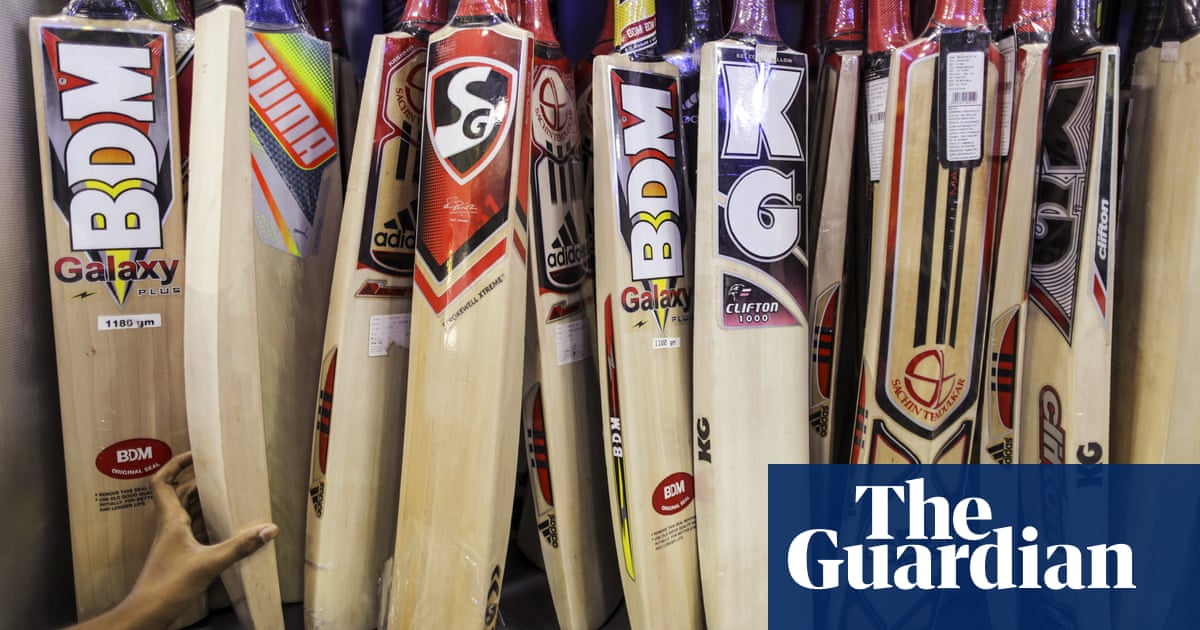The Spin | From gloves to bats, cricket gear buyers are stumped by a lack of clarity - 4 minutes read

The manufacture of cricket bats and balls in the UK is a struggling sector, according to the Heritage Craft Foundation. Photograph: Bloomberg/Getty Images The Spin From gloves to bats, cricket gear buyers are stumped by a lack of clarity No one buying equipment for the new season has much idea if it is being made ethically or sustainably and that should change
It might not be your breakfast-table topic of choice, but we need to talk about cricket equipment. During the lockdown summer of 2020, Prof Martin Charter, from the Centre for Sustainable Design (CfSD) in Surrey, and the British Association for Sustainable Sport (Basis) pulled stakeholders together to discuss the issues surrounding the manufacture of cricket gear. They weren’t quite sure what they would find.
“Although there has been quite a lot of work done on sustainability and cricket at the macro level, for example on cricket stadia,” says Charter, “that is very different when you come to manufacturing. There is very little research in the public domain, especially when you consider that we are talking about the second-biggest sport on the planet. We know very little of the supply chain. There is a lot of outsourcing to Asia, for example, with details unknown.”
As Charter points out, football started addressing a number of these issues in the 1990s (though stories of outrageous practice still crop up) – with the World Federation of the Sporting Goods Industry (WSGFI) working alongside Fifa to try to ensure its licensed products are made in compliance with the WFSGI code of conduct. There appears to be no such scheme in cricket.
This lack of accountability does not, Charter stresses, mean there are necessarily major problems. It does, however, mean that no one buying in anticipation for the new season has much idea of how their new gear is being processed. Good practice is certainly not being shouted from the rooftops, with sustainability information not generally shared on cricket gear suppliers’ websites.
And what happens to kit at the end of its life? Are there vast bundles of shirts, trousers, jumpers and pads stored in cupboards or garages or has it all been packed up, shoved on a boat and exported to landfill abroad? The answer, again, is that we simply don’t know.
It feels like there is a huge potential for kit to be re-used in cricket, where interest often wanes after a season or as children move from softball to hard-ball cricket, and as kit is outgrown from summer to summer. This would both help the game become more accessible to those on a lower income – something highlighted recently with stories of families being charged fees running into hundreds of pounds to access county pathways – and feed into the circular economy.
This might be something as simple as whites being passed on, to the more complicated process of helmet grills being re-used, or cricket nets repurposed. Professionals are often shining examples of this, mending and reusing their favourite bats until they fall to pieces.
Cricket doesn’t always help itself. There was a test case in 2019 when Gray-Nicolls produced an up-cycled pair of batting gloves made from production waste – and cricket’s man of the moment, Sam Billings, wore them for a couple of warmup matches. The International Cricket Council then banned him from wearing them for the white-ball series against New Zealand because they contravened a pedantic rule on colour.
The results led it to believe that it would be worth manufacturers investing in a vegan leather for cricket balls, something that the former Australia cricketer Jason Gillespie, a prominent vegan, has already called for. It also suggests investigation into possible alternatives to willow, with studies into the viability of bamboo cricket bats already under way by researchers at Cambridge University.
Also tucked inside the report is a fascinating paragraph on the manufacture of bats and balls in the UK: sadly, the industry is on its knees. The Heritage Craft Association’s May 2021 Red List of Endangered Crafts records the manufacture of hand-stitched cricket balls in the UK as extinct. The UK’s cricket bat manufacturing industry is nearly as sickly, classed as an “endangered species”. With many of the practitioners heading towards retirement age, there may well be an opportunity here for the England and Wales Cricket Board, or even the Professional Cricketers’ Association, to sponsor apprenticeships.
During the process of compiling the report, Charter spoke to a number of past and present players, including the former South Africa opener Daryll Cullinan. He believes there is a real interest in making the industry more sustainable, but that it will need both quality research to assess the environmental and social awareness in the sector and action from the game’s governing bodies. Good luck with that.
Source: The Guardian
Powered by NewsAPI.org